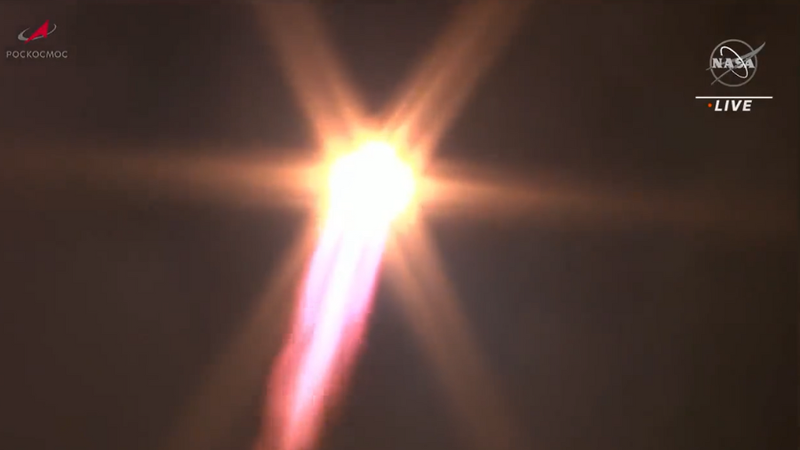Russia Successfully Launches ‘Lifeboat’ Mission to the ISS

An uncrewed Soyuz MS-23 launched today at 7:24 p.m. ET on a two-day journey to the International Space Station, where it will replace a damaged Soyuz capsule that sprung a coolant leak this past December.
Original article follows.
Read more
These Winning Close-Up Photos Show Life That's Often Overlooked
Remembering Enterprise: The Test Shuttle That Never Flew to Space
The pending arrival of Soyuz MS-23 will be a welcome sight for two ISS crew members, who have been without a reliable lifeboat for months. The purpose of this expedited mission is to replace their Soyuz-22 spacecraft, which suffered a coolant leak late last year.
Blast off from Launch Complex 31/6 at the Baikonur Cosmodrome in Kazakhstan is scheduled for Thursday, February 23 at 7:24 p.m. ET. The uncrewed Soyuz MS-23 will launch atop a Russian Soyuz 2.1a rocket. NASA’s coverage of the launch will start at 7:00 p.m. ET and be accessible on NASA TV, the NASA app, and via the agency’s website. You can watch the action at the livestream below.
NASA Live: Official Stream of NASA TV
Should all go as planned, the unpiloted Soyuz MS-23 will dock to the space station’s Poisk module at 8:01 p.m. ET on Saturday, February 25. NASA’s coverage of the rendezvous and docking will start at 7:15 p.m. ET on that day.
The Soyuz MS-22 spacecraft that delivered Roscosmos cosmonauts Sergey Prokopyev and Dmitry Petelin to the ISS in September was apparently struck by a micrometeorite in December, rendering it unsafe, both as a place to take refuge in the event of an emergency and as a means to travel back home. NASA astronaut Frank Rubio arrived with the two cosmonauts, but he’s got an option should he require an emergency ride back to Earth, thanks to the SpaceX Crew Dragon currently docked at the station. That craft was modified last month to accommodate an extra passenger.
The plan now is for the trio to stay aboard the ISS until September, at which time they’ll climb into the MS-23 for the journey back home. That’s six months longer than intended, but the original plan was for the Soyuz MS-23 to deliver cosmonauts Oleg Kononenko and Nikolai Chub, along with NASA astronaut Loral O’Hara, to the ISS on March 16, 2023. It wouldn’t make much sense to immediately send Prokopyev, Petelin, and Rubio back home, as it would create an unnecessary staffing void aboard the ISS. As for the leaky Soyuz MS-22 capsule, it’s scheduled to undock from the ISS in March and return to Earth for further inspections.
Roscosmos is claiming that a micrometeorite pierced a hole in the MS-22’s radiator, causing all of its coolant to spill out into space. It’s currently not possible to regulate the capsule’s cabin temperature, prompting Roscosmos to deem the spacecraft unsafe. Despite all of this, Joel Montalbano, International Space Station program manager at NASA, refrained from referring to the MS-23 as a “rescue” Soyuz vehicle in conversation with reporters back in January.
The MS-23 mission was supposed to launch last week, but a surprise second coolant leak, this time with Russia’s Progress 82 freighter, resulted in a slight pause. Roscosmos is once again blaming an “external impact” for the damage, as opposed to a common manufacturing defect.
More: What You Need to Know About NASA’s SpaceX Crew-6 Mission to the ISS
More from Gizmodo
Sign up for Gizmodo's Newsletter. For the latest news, Facebook, Twitter and Instagram.

